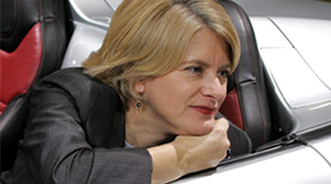Worst Over for Production Disruptions?

By subscribing, you agree to receive communications from Auto Remarketing and our partners in accordance with our Privacy Policy. We may share your information with select partners and sponsors who may contact you about their products and services. You may unsubscribe at any time.
SANTA MONICA, Calif. –
It looks like the worst of the production hurdles facing Japanese automakers are over, according to Edmunds.com, which said Thursday that 2011 full-year industry sales shouldn’t be hit too hard from the disruptions as long as current production recovery continues.
And though May certainly was a challenging month for the overall industry, the three largest Japanese automakers all have had good news to share about their production progress, Edmunds indicated.
“Manufacturing disruptions appear to have peaked in April and May, and recent news points to steady improvements moving forward,” said Lacey Plache, chief economist at Edmunds.com.
“Toyota said it expects North American production of its top-selling Camry and Corolla models to be back at 100 percent next month, and Nissan’s key engine plant in Japan is returning to full production next week — ahead of schedule next week,” Plache continued.
“Even Honda, which was the hardest hit of the big three Japanese automakers, is making optimistic statements about its recovery. If the industry continues to recover from the tsunami-driven disruptions at a strong pace, we are optimistic that its impact on 2011 auto sales will be limited,” Plache added.
Moving along, Edmunds offered more insight into its projections for industry sales in May.
Subscribe to Auto Remarketing to stay informed and stay ahead.
By subscribing, you agree to receive communications from Auto Remarketing and our partners in accordance with our Privacy Policy. We may share your information with select partners and sponsors who may contact you about their products and services. You may unsubscribe at any time.
When the final results are tallied, Edmunds is anticipating a 0.4-percent year-over-year and 5.1-percent sequential drop in overall new-vehicle sales, which are expected to come in just shy of 1.1 million units.
Edmunds believes retail new-vehicle sales will come in around 865,000 units, which would be down more than 5 percent from April.
The resulting seasonally adjusted rate would drop from April’s 13.2 million units to 12.2 million units.
Edmunds is forecasting a retail SAAR of roughly 9.7 million, also a decrease.
Breaking it down by automaker, analysts pointed to the big strides made by Korean brands, which have seized the opportunity created by the softer sales of Japanese brands.
Edmunds is expecting Hyundai/Kia to move more than 109,000 units for May, giving them a 9.9-percent share of the market. This puts Hyundai/Kia in the fifth-place slot among the biggest OEMs, edging out Honda and Nissan.
“Hyundai and Kia are taking advantage of Toyota and Honda being somewhat down and out,” explained Michelle Krebs, senior analyst at Edmunds.com. “But Hyundai’s average days to turn is getting leaner, which could be a challenge for them in the immediate future if they want to continue their impressive sales momentum.”
Honda, meanwhile, is expected to finish what could be its softest May in 14 years. The tough month is attributable to the supply dearth and its Civic and Accord vehicles hitting higher prices.
Edmunds believes Honda will move 83,300 vehicles, marking a 28.9-percent year-over-year dip and a 33.3-percent month-over-month decline.
Moreover, the 7.6 percent market share Edmunds has forecasted for Honda would come in as the worst in almost six years.
Toyota is likely to move 125,500 units for a 22.9-percent year-over-year decrease and a 21.3-percent drop from April. Its market share would be 11.4 percent.
Nissan’s May sales are forecasted at 82,800 units. This is a 15.8-percent month-over-month increase and a 1.1-percent year-over-year decrease.
Moving over to the domestic side of the market, General Motors is projected to lead the way with 227,900 units sold, which is off 2 percent from April but marks a 2-percent gain from a year ago.
GM’s market share is forecasted at 20.8 percent.
Edmunds projects Ford, meanwhile, will have new-vehicle sales of 196,700 units, giving it a 17.9-percent share of the market. Its sales would be down marginally (0.1 percent) year-over-year and mark a 3.6-percent improvement from April.
Lastly, Chrysler’s sales are predicted to hit 115,900 vehicles, marking a 10.6-percent year-over-year increase and a 1.1-percent month-over-month drop.
Market share is expected to be 10.6 percent.
Additionally, Edmunds offered a bit on industry incentives for May, which automakers certainly have trimmed back.
It estimated these averaged $2,002 per vehicle sold during the month. This marks a 5.1-percent month-over-month decrease and a 25.8-percent drop from a year ago.


